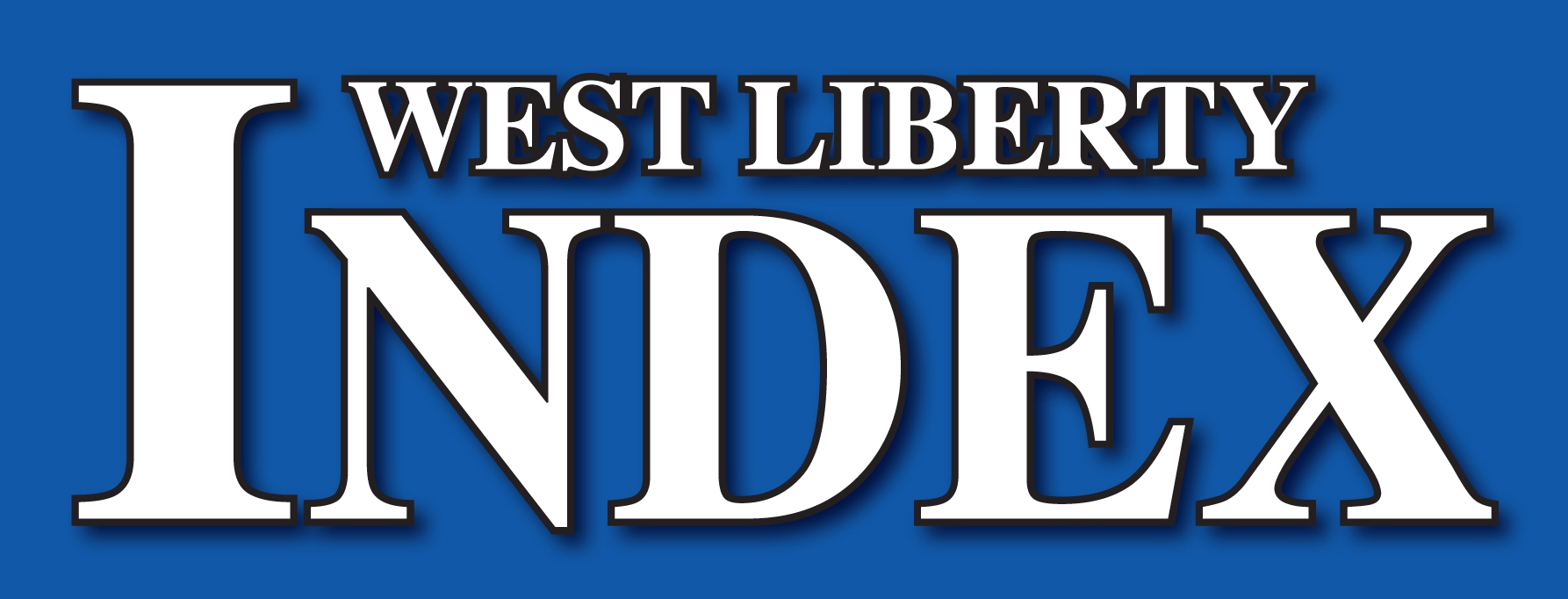New utility rate under consideration by council
West Liberty residents. businesses may soon see new rate on invoice
Utility rates are likely to increase in West Liberty.
That’s the consensus from a city council work session Tuesday night before the regular meeting of the council when city engineer Leo Foley presented the results of a study on utility rates and recommendations.
The biggest increase is likely to come from a new rate for storm water utilities, the city adding the rate to help create capital investment projects in infrastructure for new developments while improving present city rainwater drainage.
Getting feedback from the council and city officials, Foley, who works for Veenestra & Kimm of Rock Island, said he hoped to have final reports to the board by March 22 so they could start the process of fine tuning the changes in rates by their April 6 meeting, building a new ordinance and hosting public hearings before completely finalizing the changes including the new rate charge that could be on the invoices of 1,641 residents and businesses by this summer.
Foley said he came up with three alternatives including creating income for the new storm water utility area through per parcel fees, land use and parcel size or creating rates through an impervious area basis, typically known as Equivalent Resident Unit (ERU) method.
He said the ERU method is the “fairest and easiest to defend,” used by a “great majority” of Iowa communities, although many others use a flat per parcel fee.
He said the survey used 10 percent of resident meters (164) to create an average ERU. Impermeable surfaces include house roofs, garage and shed roofs, as well as concrete and asphalt pavement, deciphered using state of the art GPS mapping and the Muscatine County GIS system. The average impermeable area covering a residential lot in West Liberty was calculated at 3.961 square feet, creating a benchmark for one ERU. Any amount over that to 7,922 square feet is another ERU. The only parcels exempt from the study were parcels owned by the city including the public library as well as the Muscatine County Fairgrounds. Commercial properties including West Liberty Foods, churches, schools, Simpson Home properties and the community center were all included.
V & K recommended a rate of $4 per month per ERU, with a goal of raising those rates 50-cents a year until year three when it climbs to $5 per ERU, with 25-cent raises to follow annually for at least two more years. Foley said his calculations put the ERU for the city at a monthly rate of $11.97, but said that was “way higher” than other area communities.
Using the $4 rate structure, the city could raise $105,648 the first year, climbing to over $145,000 by year five. “The hard part will be getting it started,” the engineer said.
Foley told the council to look at the “bottom line,” noting they need to do a “truth test” as to what certain parcels might be willing to pay. “How much shock are you going to have?” he said, noting residents and business owners are going to be asking, “Why are you doing this?”
The city could start using the money right away for infrastructure projects including capital improvement plan work on Rainbow Drive and Maxson Street.
Foley said the study considered rates for storm water utilities from nine other Iowa communities including Bettendorf, Bondurant, Burlington, Coralville, Davenport, Dubuque, Mount Vernon and West Branch. West Branch has a $3 ERU per month rate that was established in July 2019. It was also pointed out some communities add a handling or administrative fee as well to utility billing, something West Liberty does not have at the present time. City clerk Lee Geertz, who would help administer the new rate, said the city’s credit plan would need to be “polished” before implementing billing.
The engineer said it was “important to stay in the game,” pointing out a lot of cities have been adding storm water utility rates, saying, “it’s changing rapidly right now.”
Foley, who did the last utility study for the city five years ago, also said some of the money from the funding could be used to create educational programs for residents and businesses that could include rain barrels, cisterns, rain gardens, detention ponds, green roofs, permeable pavement and bio-retention. Rate reductions from 10 to 50 percent could be available, depending on the program. The engineer said many of those projects would require city inspections to insure they’re done right.
Foley said although a lot of residents talk a lot about becoming more environmentally friendly, they seldom act on it, pointing out when Burlington considered the fact revenues might decrease because of environmentally concerned residents, it “wasn’t a big factor.”
The engineer said the city could also use the funding to improve storm water drainage throughout the community, noting there are already efforts to convert sump pumps from delivering water to yards to rain water drains. He said it doesn’t take much to fill up an eight-inch drain line, noting four sump pumps operating on a city block can make that a reality. He encouraged the city to continue that plan.
Foley said the council will need to fine-tune and approve an ordinance concerning the change, noting it makes no sense to reinvent the wheel, pointing out his company recently helped Burlington through the same process.
He said the city may want to consider notifying residents and businesses of the upcoming change should they proceed.
Sewer utility rates
Foley followed with a presentation on the city’s sewer utility rates, pointing out a change in management of the sewage system two years ago has put the utility in a great position for infrastructure capital improvement. A balance in the fund of $759,193 in 2016 has grown to $2,238,467 in 2020.
A proposed CIP project at the plant scheduled in the next year could cost as much as $4.5 million and Foley said the city would only have to borrow $1 million or less to complete the project with current income for the utility growing monthly.
He compared sewer rates with the communities of Albia, Cresco, Carlisle, Durant, Lisbon, Monticello, Solon and West Branch. Again, West Branch’s rate was one of the lowest on the slate, charging $12.79 per 1,000 gallons while West Liberty has a rate of $27.40 in the city and $38.66 in the rural areas. Additional rates per 1,000 gallons used were $12.79 for West Branch while West Liberty saw its rates dive to $5.33 and $6.49 respectively.
Foley said a one percent increase implemented for 2020 added $325,000 to the utility’s fund. He recommended the city look at a one to two percent increase in the rate.
The engineer said there may be federal funding available in the near future as well for “shovel ready” projects, noting West Liberty has already done a feasibility study and other groundwork for the sewer plant project, noting it is likely to qualify for those kind of funds, calling them environmentally friendly, something the EPA and IDNR like to support.
He said even if the city did have to borrow, it would likely be at interest rates of two percent or lower.
Foley said the fund is trending in the right direction thanks to some changes made in the past and recommended the city keep it’s schedule of slight rate increases.
Water utility rates
The water fund balance has grown from $292,084 in 2016 and $50,560 in 2017 to $927,423 in 2020. Even with expenses of over $650,000 in the fund annually, the city gained $323,587 in 2020 and a one percent increase would add just over $3,000 to that bottom line while a three percent increase grows the fund by over $23,000 and a five percent increase rolls it to a $43,000 increase. A five percent annual increase would increase the bottom line in the fund by over $90,000 by the end of fiscal year 2022.
The study examined water utility rates in seven different communities including Carlisle, Cresco, Durant, Lisbon, Monticello, Solon and West Branch.
While Solon and West Branch had rates of $10.98 and $6.51 per the first 1,000 gallons, West Liberty was at $9.56, but Foley had more of a concern about the rate when it rose to 4,000 gallons of use. Solon and West Branch had those costs at $24.01 and $26.04 respectively while West Liberty was much higher at $38.24.
Foley did point out the city does have one of the best water filtration systems a city can operate, calling it “probably the best water system in the state.”
Interim city manager Elizabeth Hansen asked the engineer to compare rates with other communities with similar systems, indicating it was not a fair comparison. Foley said he would investigate those comparisons and “look at it five different ways” before finalizing his report for the council.
Comments

